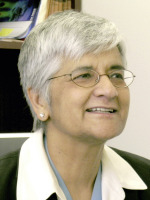当前位置:
X-MOL 学术
›
J. Am. Coll. Cardiol.
›
论文详情
Our official English website, www.x-mol.net, welcomes your
feedback! (Note: you will need to create a separate account there.)
Discontinuity
Journal of the American College of Cardiology ( IF 21.7 ) Pub Date : 2017-11-01 , DOI: 10.1016/j.jacc.2017.09.029 Renu Virmani , Hiroyuki Jinnouchi , Aloke V. Finn
Journal of the American College of Cardiology ( IF 21.7 ) Pub Date : 2017-11-01 , DOI: 10.1016/j.jacc.2017.09.029 Renu Virmani , Hiroyuki Jinnouchi , Aloke V. Finn

|
V ery late stent thrombosis (VLST) is an unpredictable and potentially life-threatening complication of percutaneous coronary intervention. In the era of thick strut (i.e., w140 mm) first-generation drug-eluting stents (DES), delayed healing (i.e., uncovered struts) of the stented segment was the primary cause of late stent thrombosis, which in some series occurred at an annual rate of 1.3% through at least 10 years of follow-up (1). Newer-generation DES are made with thinner struts and have a significantly lower rate of stent thrombosis (ST) than first-generation DES (2). Nonetheless, disadvantages to this type of system remain, including impaired coronary vasomotion, development of early neoatherosclerosis, and long-term retention of polymer-coated metal. Bioresorbable vascular scaffold (BVS) was developed with the goal of overcoming these shortcomings. The Absorb stent (Abbott Vascular, Santa Clara, California) represents the most advanced attempt to create this type of device. Yet, because its polymeric structure is not as strong as metal, Absorb had to have
中文翻译:

不连续性
极晚期支架内血栓形成 (VLST) 是一种不可预测且可能危及生命的经皮冠状动脉介入治疗并发症。在粗支柱(即 w140 mm)的第一代药物洗脱支架(DES)时代,支架段的延迟愈合(即未覆盖的支柱)是晚期支架血栓形成的主要原因,在一些系列中发生在通过至少 10 年的随访,年增长率为 1.3% (1)。与第一代 DES 相比,新一代 DES 具有更薄的支柱,支架血栓形成 (ST) 的发生率显着降低 (2)。尽管如此,这种系统的缺点仍然存在,包括冠状血管舒缩受损、早期新动脉粥样硬化的发展以及聚合物涂层金属的长期保留。生物可吸收血管支架 (BVS) 的开发旨在克服这些缺点。Absorb 支架(Abbott Vascular,Santa Clara,California)代表了制造此类设备的最先进尝试。然而,由于其聚合结构不如金属坚固,因此 Absorb 必须具有
更新日期:2017-11-01
中文翻译:

不连续性
极晚期支架内血栓形成 (VLST) 是一种不可预测且可能危及生命的经皮冠状动脉介入治疗并发症。在粗支柱(即 w140 mm)的第一代药物洗脱支架(DES)时代,支架段的延迟愈合(即未覆盖的支柱)是晚期支架血栓形成的主要原因,在一些系列中发生在通过至少 10 年的随访,年增长率为 1.3% (1)。与第一代 DES 相比,新一代 DES 具有更薄的支柱,支架血栓形成 (ST) 的发生率显着降低 (2)。尽管如此,这种系统的缺点仍然存在,包括冠状血管舒缩受损、早期新动脉粥样硬化的发展以及聚合物涂层金属的长期保留。生物可吸收血管支架 (BVS) 的开发旨在克服这些缺点。Absorb 支架(Abbott Vascular,Santa Clara,California)代表了制造此类设备的最先进尝试。然而,由于其聚合结构不如金属坚固,因此 Absorb 必须具有











































 京公网安备 11010802027423号
京公网安备 11010802027423号